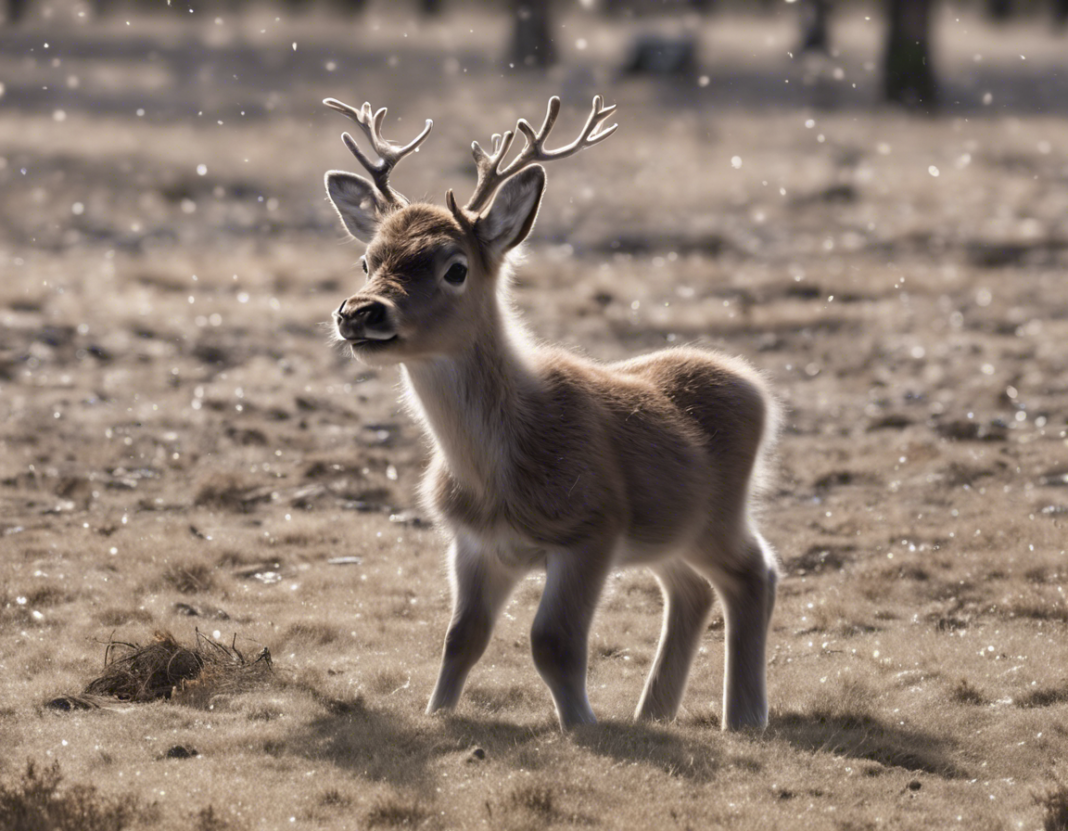If you find yourself enchanted by the idea of baby reindeer, you’re certainly not alone. These adorable creatures are synonymous with the magic and wonder of the festive season, but there’s much more to them than mere holiday cheer. In this article, we’ll delve into the world of baby reindeer, exploring their characteristics, habitats, behaviors, and the challenges they face. So, let’s embark on a heartwarming journey into the realm of these fascinating creatures.
Baby Reindeer: An Introduction
Reindeer, also known as caribou in North America, are a species of deer native to the Arctic, sub-Arctic, tundra, boreal, and mountainous regions of northern Europe, Siberia, and North America. These magnificent creatures are well-adapted to cold climates, thanks to their thick fur coats and specialized hooves that provide traction on icy terrain.
Baby reindeer, also called calves, are born in late spring or early summer, with the mothers usually giving birth to a single calf, although twins are not uncommon. These newborns are incredibly adorable, with their soft, spotted coats and wobbly legs. Within a few hours of birth, they are able to stand and walk, following their mothers closely as they navigate their environment.
Characteristics of Baby Reindeer
- Appearance: Baby reindeer are distinctively cute, with a coat that ranges from light brown to a creamy white color. They have large, expressive eyes and small, delicate features that endear them to all who encounter them.
- Behavior: Calves are typically playful and curious, exploring their surroundings under the watchful eye of their mothers. They form strong bonds with both their mothers and other members of the herd, often engaging in playful activities like running and jumping.
- Diet: Like adult reindeer, calves are herbivores, feeding on a diet of grasses, lichens, mosses, and other vegetation. They rely on their mothers’ milk for the first few months of their lives, gradually transitioning to solid food as they grow.
Habitat and Range
Baby reindeer inhabit a variety of ecosystems, including tundra, boreal forests, and mountainous regions. They are well-suited to cold climates, with adaptations that allow them to withstand harsh conditions such as extreme cold and limited food sources. Reindeer are known for their migratory behavior, traveling vast distances in search of food and suitable breeding grounds.
In regions where they coexist with human populations, reindeer herding has been a way of life for centuries. Indigenous peoples have long relied on these majestic animals for food, clothing, and transportation, forging a deep connection with them that transcends mere survival.
Challenges Facing Baby Reindeer
Despite their resilience and adaptability, baby reindeer face a number of challenges in the modern world. Climate change, habitat loss, predation, and disease are among the threats that endanger these iconic creatures. As temperatures rise and natural habitats shrink, reindeer populations are increasingly vulnerable to disruptions in their traditional migration patterns and food sources.
Additionally, human activities such as mining, logging, and infrastructure development can disrupt reindeer habitats and lead to conflicts with local communities. Conservation efforts are underway to protect these animals and ensure their survival for future generations.
Conservation Efforts
Numerous organizations and government agencies are working to conserve and protect reindeer populations around the world. These efforts include habitat restoration, captive breeding programs, research on reindeer behavior and ecology, and public awareness campaigns to promote coexistence between humans and reindeer.
By raising awareness of the challenges facing these animals and implementing sustainable practices, we can help ensure a bright future for baby reindeer and their families. Together, we can preserve the magic and beauty of these enchanting creatures for generations to come.
Frequently Asked Questions (FAQs)
Q1: How long do baby reindeer stay with their mothers?
A1: Baby reindeer typically stay with their mothers for several months, learning important survival skills before venturing out on their own.
Q2: Are baby reindeer endangered?
A2: While some reindeer populations are considered vulnerable due to habitat loss and other factors, not all baby reindeer are currently endangered.
Q3: Do baby reindeer migrate with their herds?
A3: Yes, baby reindeer often migrate with their herds, following their mothers as they travel in search of food and suitable habitat.
Q4: Can baby reindeer swim?
A4: Yes, baby reindeer are capable swimmers and may need to cross rivers or bodies of water during their migrations.
Q5: How fast can baby reindeer run?
A5: Baby reindeer are surprisingly fast and agile, able to keep pace with their mothers and evade predators when necessary.
In conclusion, baby reindeer are more than just symbols of the holiday season – they are fascinating creatures with unique traits and behaviors that warrant our admiration and protection. By learning more about these enchanting animals and supporting conservation efforts on their behalf, we can ensure that future generations have the opportunity to experience the magic of encountering baby reindeer in the wild.
